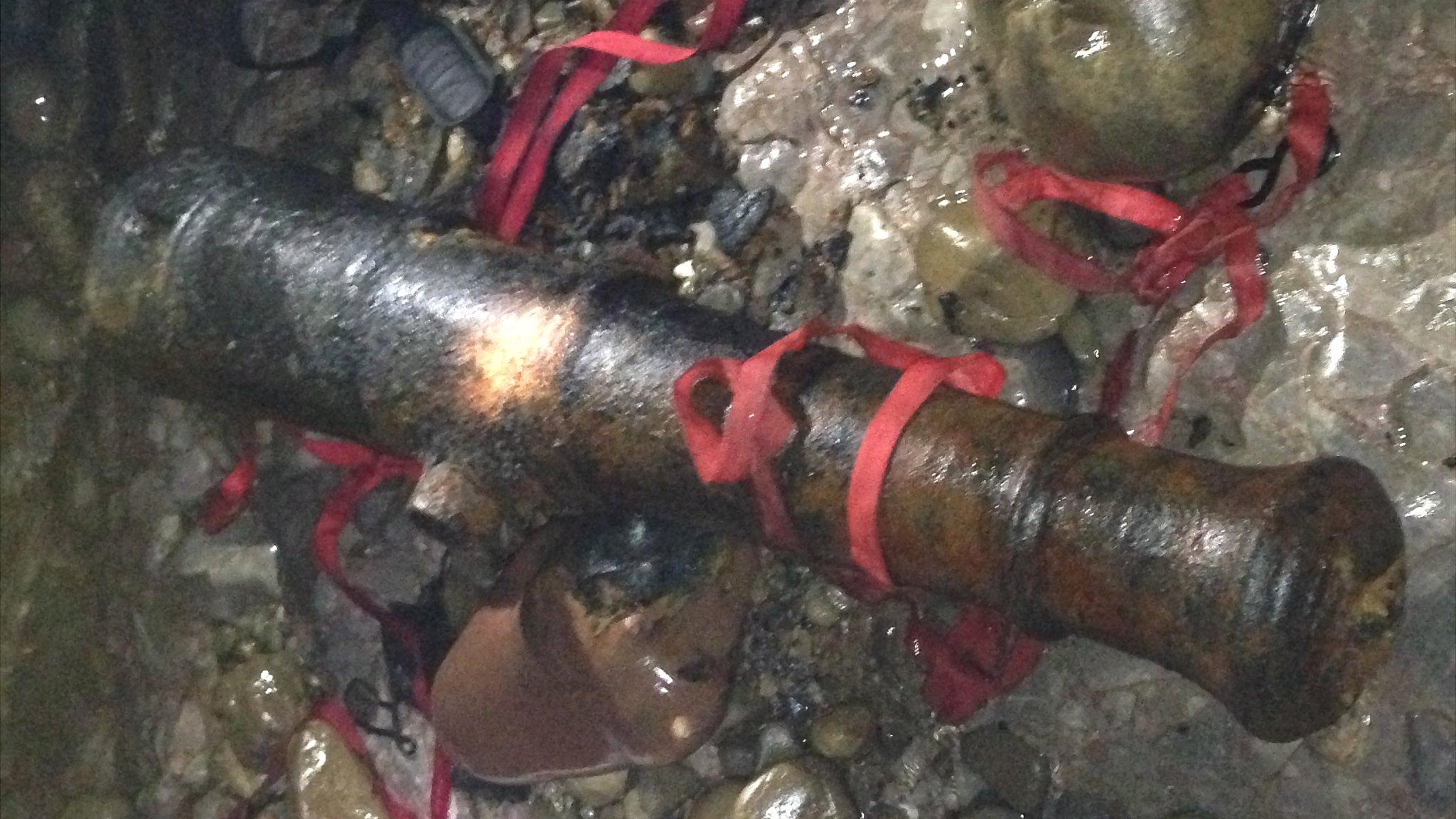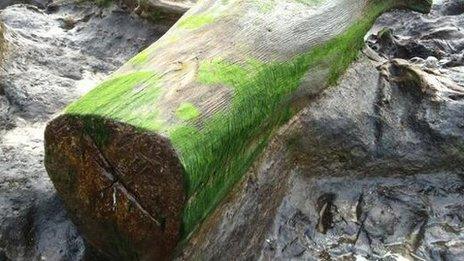Port Eynon Gower beach footprints 'are 7,000 years old'
- Published

Ancient footprints discovered on a beach in south Wales are 7,000 years old, researchers have discovered.
Uncovered in 2014, the pre-historic footprints of children and adults at Port Eynon on Gower were initially thought to date to the Bronze Age.
But radiocarbon dating by Cardiff University has revealed they are 3,000 years older than that.
Archaeology PhD student Rhiannon Philp said they could belong to a Mesolithic hunting party.

Ms Philp, a student in the university's School of History, Archaeology and Religion, said: "These 'frozen' footprints made in freshwater marshland give us a fleeting glance of a group of adults and children travelling together seven millennia ago.
"But the picture is even more precise. Wild animal tracks suggest deer and wild boar moving in the same direction.
"What we might be witnessing 7,000 years later is a snapshot moment of a Mesolithic hunting party tracking their prey through an open, boggy landscape now lost to the waves."
A spokeswoman for the university said post-Ice Age human footprints were rare in the UK, with only nine recorded tidal sites - the majority of which are in Wales.
Ms Philp added: "Given the fragility of these examples and climate change now and then, it is incredibly important to obtain as much information as possible whenever the opportunity arises."

- Published9 February 2014

- Published13 January 2014

- Published13 January 2014
